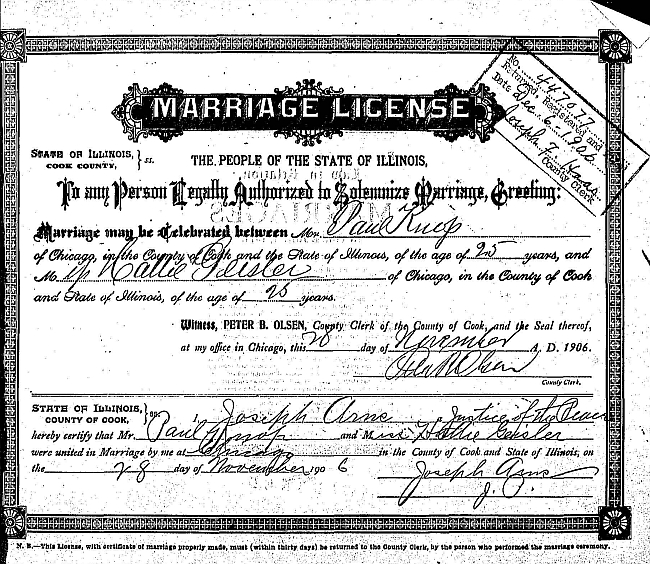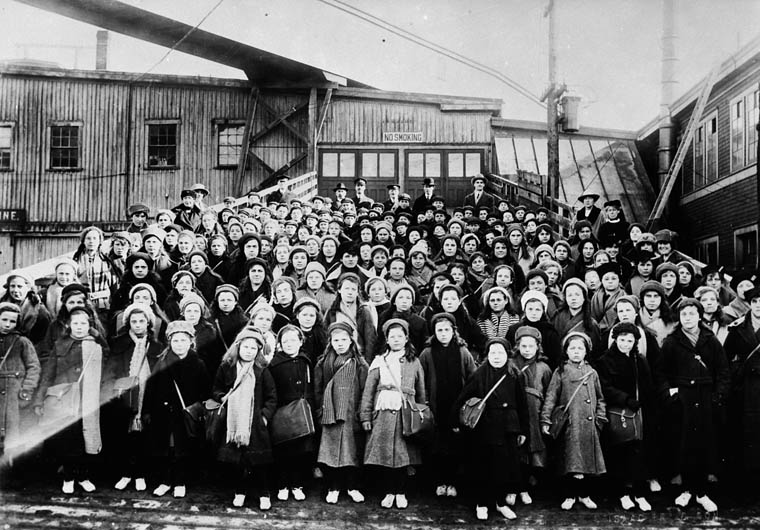I hope you can dedicate five minutes for your country and read this article. Can you do 3 Things for Canada?
This is probably the very best article I have ever, ever, ever read. It was written by the Mayor of Calgary - voted as the most popular Mayor in the whole world, and I can see why.
http://www.theglobeandmail.com/news/national/divided-canada-stands-to-lose-what-makes-it-great/article26848363/ I have copied the article below in case the link disappears.
This past summer, I took my mother and my sister’s family, and we all went to Tanzania. Our little group ranged in age from 6 to 75, and we were exploring our roots. We saw the house my mum grew up in and the hospital where my sister was born. We saw lots of elephants. I also stood on the shores of Lake Victoria, in Mwanza, and gazed across the water. Had my parents been born on the other side of the lake, instead of being immigrants from Tanzania in 1971, they would have been refugees from Uganda the following year – pushed out by the bloody purges of Idi Amin.
In 1970, my father was working at a hotel in the city of Arusha. Then, as now, Arusha hosted many UN conferences and other international meetings. My dad met some Canadians working for the Canadian International Development Agency, who, impressively enough, got The Toronto Star delivered every week.
A voracious reader, my dad would ask for the newspaper when the CIDA workers were done with it. An article about the new city hall in Toronto captured his imagination. How do you build such a tall building, he wondered, and make it round? He resolved to one day visit it.
The following year, he got his chance. My father had saved up to go to his sister’s wedding in London, England. He figured that, since he was in London, he might as well make a side trip to Toronto, Canada. Just before leaving, they discovered my mum was pregnant. They went anyway, leaving my three-year-old sister with relatives.
Once in Toronto, my parents fell in love with the city (it was summer). They felt a certain freedom, both for themselves and, they anticipated, for their children, and so they decided to stay.
There were only about six Ismaili families in Toronto in 1971. Prayer services were held in the basement of a home. On Fridays, my mother would strip her only bedsheets, wash them by hand, hang them to dry, and hope they would be done in time to fold. She would then take them, on the subway, to evening services. Decent cloth was needed to cover the small tables and lend the proceedings dignity.
Only a few months later, this little group found itself having to look after hundreds of Ismaili families – refugees from Uganda – and to show them how to survive in a strange new place. They never once begrudged this responsibility. Even though they had so little, these beleaguered new arrivals had less. Even though my parents barely knew how to navigate Canada, the newcomers had no idea how to. So they got to work.
When I was 1, we packed up a Dodge Dart and moved to Calgary. Sometimes we were very poor. Sometimes we were only mostly poor. But what we lacked in money, we gained in opportunity.
In Calgary I went to amazing public schools. I spent Saturday afternoons at the public library. I learned to swim, kind of, at a public pool. I explored the city on public transit. And through it all, I was nurtured by a community that wanted me to succeed, that had a stake in me and cared about my well-being.
And in 2010, 20 months before he died, my dad, who had loved Toronto City Hall, got to sit in another city hall and watch his son be sworn in as mayor.
While that personal story may seem extraordinary in its details, what’s extraordinary is just how ordinary it is. It’s a very Canadian story of struggle, service, sweat and, ultimately, success. Many Canadians have such an origin story. With each telling, we share in the story of who we are. These stories tell us about when Canada works. And when Canada works, it works better than anywhere.
At our best, we’ve figured out a simple truth: We’re in this together. Our neighbour’s strength is our strength. The success of any one of us is the success of every one of us. More importantly, any one failure is all our failure, too.
When Canada works, it is because of that tolerance and respect for pluralism, that generous sharing of opportunity with everyone. It is because of that innate sense that every one of us, regardless of where we come from, what we look like, how we worship or whom we love, deserves the chance right here, right now, to live a great Canadian life.
That Canada, however, is incredibly fragile, and must be protected from the voices of intolerance, divisiveness and small-mindedness. That Canada must be protected from the voices of hatred.
Let’s talk about Bill C-24, the Strengthening Canadian Citizenship Act, which allows Ottawa to strip Canadian-born citizens of their citizenship if they’ve been convicted of treason, spying or terrorism, if those Canadians have citizenship in another country or are considered able to claim citizenship in another country through a parent. The government can do so even if the conviction takes places in another country – even one that lacks the rule of law.
One of the highlights of being mayor of Calgary is that I get to attend citizenship ceremonies. Every time I do, I cry with joy to be with so many people who have worked so hard to become Canadian and have chosen to take on the great responsibility of citizenship. Sharing in that moment with new citizens, I always talk about how, growing up, I wondered why my father, mother and sister had these fancy citizenship certificates, while all I had was a lousy birth certificate. Only later did I appreciate two things about those pieces of paper: They were the most valuable possessions we had, and they were really the same document.
No longer.
How is it that those individuals I get to watch saying their oath should somehow be less Canadian than others? How is it that we should allow it to be easier for our government to strip them of the privilege and responsibility of citizenship? How is it that I, born at Saint Mike’s in downtown Toronto, could also have my citizenship revoked? One Canadian citizen committing the same crime should be treated the same as any other. They should not be subjected to a different sort of justice.
Most distressingly, the bill allows the minister of citizenship and immigration to exile people from Canada without any Canadian court being involved. That is a degree of power no individual should possess.
How did we allow this to happen?
I am deeply troubled by the language of divisiveness in Ottawa these days. The label of “terrorist” is thrown around with deliberate regularity. It is targeted language that nearly always describes an act of violence done by someone who shares my own faith, that ties violent action to individuals in a religious group here in Canada – many of whom are citizens. It does little to understand the causes of individual acts of violence or the potential solutions. Instead, it encourages fear and division; that’s the opposite of the country we aspire to build and nurture.
Our government likes to warn us of the radicalization of Muslim youth in our communities. But law-enforcement officers and community activists explain that the deeper cause of this radicalization is alienation and isolation – that the kids being radicalized are the same ones who’d often otherwise join gangs. In other words, according to individuals on the ground, the issue is not about religion. It’s about inclusion. Understanding this, we must work hard to make these kids feel part of the community.
But then the government, seeking to appeal to a certain segment of society, picks a fight on a completely irrelevant issue – wearing the niqab to a ceremony. It will appeal two court decisions and spend millions in taxpayer dollars to prevent one woman, Zunera Ishaq, from voting?
And what about those kids – the ones we’re trying to convince that there’s a place for them in our society? Bill C-24 warns them that, no matter what, they can never be truly Canadian. That their faith is incompatible with our values.
All that good work on deradicalization? Undermined.
When we act like this, whether the issue is addressing the extraordinary human suffering of refugees fleeing conflict or the social problems of our own youth, we are failing ourselves, our nation, and the world.
Let it be said: Such failures to become the Canada we hope for aren’t only recent. Far from it. After all, we are the nation that turned back Indian Sikh refugees on the ship Komagata Maru in 1914, the nation of the Chinese head tax, the nation of Japanese internment camps and the “None is too many” policy. We are the nation of provincial eugenics programs and generations of residential schools.
These, sadly, are also our origin stories. Many of us feel a deep, dark discomfort when confronted with them. The truth is not easy. It wasn’t easy for the victims of residential schools to tell their stories to the Truth and Reconciliation Commission, and it wasn’t easy for Canadians to bear witness to those truths. But it is important that we did then, and that we are doing so with the dark truths we see now.
The real answer to crafting the Canada we aspire to build lies in engaging muscularly with both the past and the future. It means undertaking a thousand simple acts of service and a million tiny acts of heroism. It means acting at the community level: on our streets, in our neighbourhoods, and in our schools. It means refusing to accept the politics of fear.
And then it means exporting the very best of Canada, that ideal and real Canada, to the rest of the world. Yes, I’m naive to believe we still have something special to share. In my city, we have a program, 3 Things for Calgary, that challenges every citizen to take at least three actions, large or small, using their own passions and resources, to make their community better. Let us start 3 Things for Canada and dare each other to take actions that will build our local, national, and global communities with our true, aspirational Canadian values.
One final story. I had the chance a couple of years ago to visit a school in Calgary on its 100th anniversary. It’s called Connaught School, named after the Duke of Connaught – the governor-general of Canada, a son of Queen Victoria. Because it is right downtown, Connaught School is often the first point of arrival for newcomers. In all, 240 students are enrolled; they come from 61 countries and speak 42 languages at home.
I chatted with some of those kids and their parents. Many of the things I heard were horrible: stories of war, of poverty, of degradation. I heard stories of violence so horrific I could not imagine one human being doing that to another, let alone in front of a child.
Then I looked out at those kids, sitting on the floor in the gym, wearing their matching T-shirts. And I looked at their parents, in hijabs and kanga cloth, in Tim Hortons uniforms and bus-driver caps, in designer suits and pumps.
All at once, I knew something to be true above all else. Regardless of what these kids had been through, of how little they have or had, of what wrath some vengeful God had visited on them and their families, they’d had one burst of extraordinary good fortune – they ended up in Canada, in Calgary, at the Connaught School. They ended up in a community that wants them to succeed, that has a stake in them – that cares about them, and will make sure they don’t fail.
And I knew that those kids would have a chance to live great lives. That’s the promise of Canada.
Adapted from an address given at the Institute for Canadian Citizenship’s 13th LaFontaine-Baldwin Symposium, in Stratford, Ont. in September.
Cheers,
Pat









